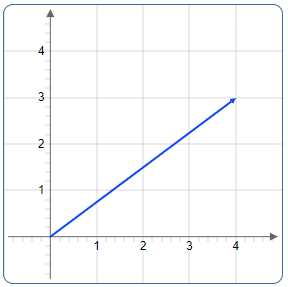Vector Magnitude Calculator
Calculator and formulas for computing the length (magnitude) of a vector
Vector Magnitude Calculator
Vector Length by Pythagoras
Calculates the length (magnitude) of a vector through Pythagorean calculation: |v| = √(x² + y² + z²)
Magnitude Info
Magnitude Properties
Magnitude: Always positive or zero
Geometric: Distance from origin
Formula: Square root of component squares
Examples
Formulas for Vector Magnitude
2D Vector Magnitude
Pythagorean theorem in the plane
3D Vector Magnitude
Extension to space
4D Vector Magnitude
Higher-dimensional generalization
General Formula
n-dimensional Euclidean norm
Calculation Examples for Vector Magnitude
Example 1: 2D Magnitude
Classic 3-4-5 Triangle
Example 2: 3D Magnitude
Spatial Vector
Geometric Interpretation
The magnitude gives the geometric length of the vector
Visual Representation (2D)

The magnitude corresponds to the hypotenuse of a right-angled triangle
Applications of Vector Magnitude
Vector magnitude finds application in many scientific and technical fields:
Physics & Mechanics
- Velocity magnitudes and acceleration
- Force magnitudes and impulses
- Magnetic field strengths
- Wave vectors and frequencies
Computer Graphics
- Vector normalization
- Distance calculations
- Lighting models
- Collision detection
Navigation & GPS
- Distance calculations
- Velocity measurements
- Route optimization
- Coordinate distances
Data Analysis
- Euclidean distances
- Clustering algorithms
- Similarity measurements
- Machine learning metrics
Vector Magnitude: The Euclidean Norm
The vector magnitude or Euclidean norm is the direct generalization of the Pythagorean theorem to arbitrary dimensions. This fundamental operation connects algebraic calculations with geometric distances and forms the foundation for normalizations, distance measurements, and optimization procedures in mathematics and computer science.
Summary
Vector magnitude combines geometric intuition with algebraic precision. The Pythagorean formula - square root of component squares - enables exact length calculations in arbitrary dimensions. From 2D graphics through 3D navigation to high-dimensional data analysis, vector magnitude remains an indispensable tool. It shows how the classical Pythagorean theorem forms the foundation for modern scientific and technical applications.
|
|